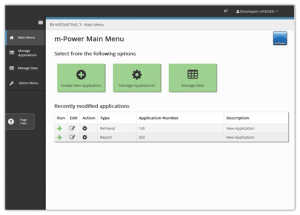7 habits of highly productive web developers
 A recent Forrester study highlights a major shift in the business landscape: More and more, software development plays an increasingly important role in a company’s competitive edge. According to the study, “Companies that are able to innovate quickly with software will outcompete traditional market leaders.”
A recent Forrester study highlights a major shift in the business landscape: More and more, software development plays an increasingly important role in a company’s competitive edge. According to the study, “Companies that are able to innovate quickly with software will outcompete traditional market leaders.”
There’s just one problem: As the study points out, software development is still a problem for the majority of companies. Most are not able to deliver software solutions as fast as the business leaders want them.

The fact is, as business moves to the web, software development speed plays a crucial role in a company’s success. The old software development methodologies–in which development projects required months (or even years) to complete–will no longer work. Businesses must permanently shift their development cycle into the “days and weeks” range.
How can businesses improve their development speed so drastically? While the answer to that question varies by company, today I’d like to focus on one area that’s relevant to most businesses: improving developer productivity.
What separates the productive developer from the unproductive? What do the productive developers do differently? How can developers become more productive? We posed those questions to a few experts in the area, and have compiled their advice below. Here are 7 habits of highly productive developers:
…
 On our 2013 survey, we asked this question: “What problems keep you from accomplishing your goals?” In other words, what stops your company from addressing all of those pressing needs on your to-do list?
On our 2013 survey, we asked this question: “What problems keep you from accomplishing your goals?” In other words, what stops your company from addressing all of those pressing needs on your to-do list?
 If you’re looking for a way to improve your application development speed, create mobile web apps, or just build enterprise web applications without programming, you should really check out the all new m-Power Trial. It’s recently been revamped with the
If you’re looking for a way to improve your application development speed, create mobile web apps, or just build enterprise web applications without programming, you should really check out the all new m-Power Trial. It’s recently been revamped with the 

